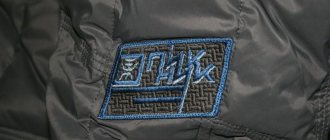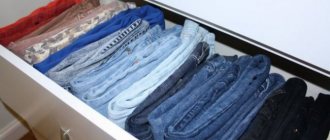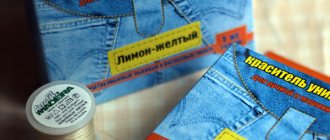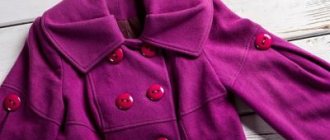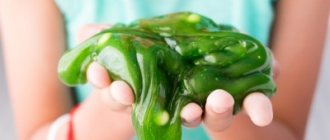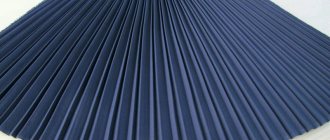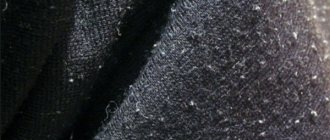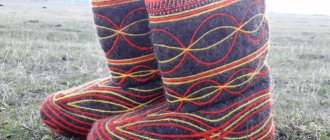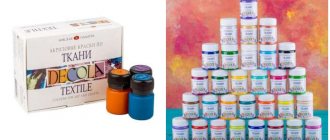Starch solution is used at home to impart a certain degree of rigidity to fabric surfaces. This helps maintain the shape of collars and cuffs on clothes, bed linen and tablecloths remain neat and fresh longer.
The main advantages of this procedure:
- the tissue structure becomes denser;
- the original form of things is preserved longer;
- the fabric wrinkles and wears out less, starch makes the threads stronger;
- starch solution, impregnating the fabric, prevents contamination, since it does not allow dirt to penetrate into the deep layers;
- starched items are easier to wash, since the starch layer covering the fabric receives the main load.
Why starch things
Many modern women do not understand how to starch fabric at home, because store shelves are overflowing with a variety of care products. However, the starching procedure has a huge number of advantages that other means do not have. As a result:
- durable fabric that does not tear as much as non-starched fabric;
- things are not stretched and generally hold their shape better;
- when stains get in, they are not absorbed, but remain on the surface, making them easy to wash off;
Starched linen
- all contaminants remain on the upper protective layer of starch, and the starch itself dissolves very well in water, so the item can be washed very easily;
- starch to some extent replaces bleach, but is more gentle on fabrics;
- things smell fresh.
Type of starching
The essence of the process is to soak the item in a starch mixture with water. It is prepared from corn, potato and wheat starch. As a rule, potato is used, since it has a lower cost, but at the same time gives things whiteness. In addition, it is easy to prepare a composition from it, and different concentrations of the paste allow you to achieve a certain rigidity. For example, before you starch your laundry a little, you should prepare a soft solution, but to get a hard form, a more saturated solution will help.
Soft solution
Products after a soft solution have a slight crunch when crushed and have elasticity, but the item is not hard to the touch. Clothes, napkins and other things will not hold their desired shape. It is recommended to process:
- dresses, skirts and blouses made of thin fabric (for example, chiffon);
- bed sheets;
- uniform;
- men's shirts.
Method for preparing the solution: for 2 liters of liquid you will need 2 tsp. raw materials, the ingredients just need to be mixed in a basin. Dip washed clothes into the paste and leave for 2-3 minutes, then remove, squeeze lightly and shake well. It is necessary to dry on hangers or in a horizontal position (depending on the product) to prevent creases from forming. It is also undesirable to wring out textiles too much, since ironing them after drying will be problematic.
Note! It is permissible to wash off the composition if things have lain in the solution for more than the required time. Do not dry starched clothes on the radiator.
Medium hardness
The paste is ideal for aprons, flounces on clothes, napkins and tablecloths, furniture covers and bows. Many people use it for denim shoes made of light material, lace and curtains. The solution is prepared from the same components, but in different proportions: 2 liters of water and 2 tbsp. l. raw materials. If you want to give things shine, you can add another ½ tsp. salt.
Place clean laundry in the paste, wait a minute and remove it. Gently squeeze out excess product and straighten. You need to dry it immediately in the right shape, that is, smooth the napkins with your hand and leave them in a horizontal position, and hang the curtains.
Saturated paste
The starch solution will require borax, but many people can do without it. It is necessary to add a little more starch (about 2 tbsp) and follow the usual technology. Use a saturated paste for cuffs and collars, skirts (for example, tutus) and petticoats, lace summer boots and other products where strong hold is required.
We recommend:
How to erase a pen from wallpaper without leaving marks at home
The traditional recipe calls for 3 tbsp. l. starch and 2 tsp. borax per 2 liters of warm water. Mix the dry substance thoroughly with a glass of cold water; if lumps appear, they must be removed. Dissolve borax in a glass of boiling water and cool to room temperature. The remaining liquid should be brought to a boil, mix all ingredients together and leave for 1.5-2 hours.
Note! Often the paste turns gray after cooling. In this case, it is advisable to bring it to a boil again and keep it on the fire for 3-5 minutes, stirring.
Is it possible to do without starch?
A solution with starch is not suitable in all cases; for example, for synthetic fabrics it would be more effective to replace it. Possible options:
- sugar. Diluted with water 1:2. It is important to dissolve the sugar in the water before it boils, otherwise it may burn and give things a reddish tint;
- gelatin. Per liter of water from 2 to 4 spoons (depending on the desired hardness of the fabric). Gelatin swells in water, after which you need to heat the water until it is completely dissolved. Thanks to this method, fabrics become more shiny;
- PVA. The most common glue can help give products a rigid shape. Proportions - 1 part glue to 2 parts water;
- ready-made mixtures, boron powder. Most often they are sold in stores in the form of sprays and are quite convenient to use; some of them can be added to the washing machine.
You might be interested in how a beginner can sew dresses for dolls with his own hands
Preparing the mixture
Basic rules and recommendations
Not all fabrics can be starched. This procedure is recommended for items made of cotton or natural linen. You can use it for things made of cambric, chintz, satin or calico. Woolen items are not treated with paste. Similar processing is not carried out for synthetics. Do not starch clothes made of black or colored fabric. This treatment changes the natural shade of things.
After treatment with paste, the breathability of fabrics is greatly reduced, and hard elements of clothing rub the skin even more. Therefore, starching is not used for underwear, and only individual elements are processed for summer clothes. Do not allow paste to get on the embroidery floss thread. The paste causes them to stick together and become untidy.
Most often, starch obtained from potatoes is used to prepare the solution. It has a white color and additionally gives a whitening effect. But if there is no such product in the house, any other starch will do.
Important! Starching is performed only on clean things. Therefore, before treatment, clothes are washed and all stains are removed from them.
What things should not be starched?
Despite the large number of advantages, not everything can be starched. In some cases, you can only do harm:
- casual summer clothes. Due to the fact that starch envelops the fabric with a hard layer, it allows air to pass through worse, so the body will not breathe;
- underwear and children's clothing. These things must remain hygroscopic and soft so as not to harm the skin in any way;
- dark and colored things. Due to the bleaching effect, the color of the fabric may change greatly or become stained;
- synthetic fabrics. They will not become starchy, so it is better to use alternative methods;
- embroidery. Starch can stick the threads together and the embroidery will be damaged.
Starched pillowcases
What are the benefits of starch for fabric?
Rinsing things with added starch has the following beneficial factors:
- The fabric holds its shape for a long time, which is especially important for some clothing items.
- Starch particles remain between the fibers of the material and it becomes denser.
- Starched fabric hardly wrinkles.
- Starch creates a protective layer for dirt. Any stains are washed off from such products faster, since the dirt does not penetrate deep into the fibers.
- The product has a whitening effect.
- Reduces electrostatics of synthetic fabrics.
- Extends the life of fabric by strengthening its fibers.
On a note! You can use any starch: potato, rice, corn, wheat. But it is potato that has the best properties for fabric.
What to consider when using starch
How to starch fabric is not a complicated procedure, but it does require some skills and knowledge. Recommendations for starching;
- the procedure must be repeated approximately every 4 washes, but not every time;
- if you squeeze starched fabric, you can get creases, so it’s better not to overdo it;
- for delicate items like lace, it is better to make a solution with rice starch and milk instead of water;
- Only freshly washed items are starched;
- a cloudy solution should not be used if you don’t want to throw it away - you can boil it for 5 minutes;
- the thick mixture can be diluted with water, the main thing is to preheat it;
Starching in a machine
- to obtain shine and smoother smoothing, add a quarter teaspoon of salt to the solution;
- Ironing clothes after the procedure should be slightly damp, and if they have already dried, walk with a damp cloth. To be safe, it is better to cover the starched fabric with gauze and iron it through it;
- things should dry naturally, away from radiators and direct sunlight;
- Sometimes a grayish powder is sold in stores; it cannot be used immediately. This starch is soaked in water, all unnecessary particles settle out, and then the solution is filtered and it is ready for use;
- If you don’t like the result after starching, you should just wash the item.
Alternative option
In addition to using potato starch, there are alternative ways to shape textiles. Some housewives have gotten used to using sugar, gelatin and even PVA glue for this purpose.
Sugar
Pour water into a saucepan and place it over medium heat. Take sugar at a 1:1 ratio, slowly pour it into the water, stirring, and bring the solution to a boil. When the syrup is ready, pour the starch pre-dissolved in cold water into it, stirring thoroughly. Immerse the fabric in the resulting viscous liquid, leave for a few minutes, and then remove. Press the product and give it the desired shape. With this method, the starched fabric cannot be wetted, so the procedure will have to be repeated after each wash.
PVA glue
With its help, needlewomen usually starch knitted items and fabric for embroidery.
To prepare the solution, take PVA glue and water in a ratio of 1:1 or 1:2, depending on the thickness of the glue. Thoroughly stir the glue in the water, and then dip the product into the solution. After a minute, remove it, shape it and leave it until completely dry.
Gelatin
This method is also “one time”. Pour 1 tbsp. spoon of gelatin with a small amount of cold water. When the substance swells, add more water to make 200-250 grams and place the mixture on low heat. It needs to be heated without boiling. Gelatin should dissolve completely in water. When this happens, the solution can be used.
The above methods are rarely used to starch clothes or bedding. They are more suitable for use in the craft process, for example to give shape to knitted flowers.
Basic methods of starching fabric
To starch, there are several step-by-step methods with their own characteristics; this can be done at home:
- soft way. The most gentle with a small proportion of starch. This method is suitable for delicate items such as silk or chiffon items, blouses, bed linen, curtains.
- semi-rigid method. This method is used most often. It is good for all products that should not wrinkle and somehow keep their shape. Used for shirts, tablecloths, lace napkins.
- the hard way. Used for things that must keep their shape clearly. For example: collar crafts, knitted vases, cuffs, petticoats.
You might be interested in Dress patterns with frills and elastic bands on the shoulders
Hard method solution
Recommendations for dark fabrics
To shape a black or dark item, you can use gelatin as described above. The second way is to purchase ready-made starch spray, which is used during the ironing process. When purchasing such a composition, read the instructions on the package: it should indicate that the product is suitable for dark fabrics. Typically, such aerosols are used as follows:
- Shake the bottle and spray the composition onto clothing from a distance of 25–30 cm.
- Wait 20 seconds for the fabric to soak.
- Iron the item at the temperature indicated on the label.
Before use, it is advisable to test the product on an inconspicuous area of fabric.
Preparation of the solution
In order to make starching, you need to use a solution. There are a lot of ready-made products on store shelves, but as practice shows, it is better to use home methods.
Important! The starching solution is made from just two ingredients - water and starch. In general, potato, corn or rice starch is used, but the last two do not give a very good lasting result. But potato is perfect. This solution is absorbed very well into the fabric and after ironing creates a protective layer on it.
Each starching method has its own characteristics. For soft, take 1 teaspoon of starch per 150 ml of water; you can even pour this solution into a spray bottle and go over the entire product. For average, 1 tablespoon per 1 liter of water, visually similar to jelly.
Napkin
Starching black and colored items
It is not recommended to stiffen dark fabric with potato paste. This product causes whitish stains to appear on things, which are difficult to remove. Therefore, instead of potato starch, they use a gelatin solution or PVA glue.
When processing colored items, the determining factor is the shade of the fabric. If it is light and dull, traditional starching methods will do. For bright prints, use gelatin or PVA glue. When using the latter, the fabric is not soaked, but sprayed from a spray bottle.
How to properly starch things with PVA glue
PVA glue is very convenient to use. You don’t need to boil it to get a solution, just take 1 part of glue and add it to 1 part of water. The product is simply lowered into the resulting mixture until it is completely saturated. After this, the item should be taken out and dried. If necessary, iron it like any other starched item.
Vases are starched in a hard way
Traditional way at home
Before you start starching, you need to familiarize yourself with the peculiarities of carrying out the procedure at home.
Kinds
There are three main types of clothing processing.
Soft
It is recommended to use this method if you need to process dresses made from thin materials. In this case, use a small amount of starch powder. It is enough to add one and a half tablespoons of the substance to a liter of water. Soft starching is suitable for products made from knitted fabrics.
Medium hardness
The average intensity of starching is not suitable for every item. Experts advise using this method when working with napkins, tablecloths and bed linen. You can also start processing skirts, sweaters and durable shirts. This technique is completely unsuitable for evening dresses, as it can damage the fabric material.
Hard
The brutal method is not used very often, because it is not suitable for all things. People who regularly starch are advised to use it when processing shirt cuffs or collars. Sometimes skirts and dresses made of durable fabric are processed using this method. Hard starching clothes is necessary to give them shape.
Preparation of the solution
To prepare your own solution for starching things, you need to:
- add 90 grams of starch to 500 milliliters of water;
- boil 400 milliliters of liquid and add it to the starch mixture;
- the resulting solution is thoroughly stirred and re-boiled on the stove for half an hour;
- The liquid is poured into a separate bowl and left to cool.
Recipe improvement options
There are four ways to improve the recipe for creating a starch mixture.
For whiteness
Some housewives starch evening dresses to make them whiter. In this case, the solution will have to be prepared according to the standard recipe. However, a little blue is added to the resulting mixture, which helps get rid of dirt and stains on the fabric surface.
For shine
A special recipe for shine will help give things freshness and make them more attractive. To prepare the paste, starch is mixed with talc and water. After this, a napkin is dipped into a container with liquid, through which the woman’s dress will be ironed. The shine remaining on the fabric after ironing will not disappear even after washing.
For easy ironing
Sometimes starching is done so that dresses wrinkle less and are ironed better. To remove bruises, starch liquids are used, during the production of which not only water, but also milk was added. No more than 60-80 milliliters of milk dissolves in a liter of water.
To save color
It is no secret that colored items are washed over time, and their color becomes less bright. To make bright dresses always look beautiful, you need to use a special product.
Processing things
Treating clothes with starch solutions is quite simple. To do this, dresses are placed on an ironing board or any other flat surface. Then a cloth napkin is moistened in the liquid and the surface of the dress is treated with it.
How to properly dry a starched item
There is nothing complicated in drying such things, the main thing is to remember a few rules:
- natural drying only;
- exposure to direct sunlight is prohibited;
- exposure to low temperatures is prohibited;
- You cannot dry things on a radiator or heater.
Important! If you need it very urgently, you can dry the item using gauze using an iron.
Starched collar
Photo tips on how to starch fabric
Read here How to wash brilliant green from skin: a review of the best ways and how to quickly wash off brilliant green stains (video + 105 photos)
Did you like the article? Share 
0
How to iron
Ironing of starched items is recommended to be more delicate than regular ironing, so you need to know some nuances:
- wet things are easier to iron, so after the procedure it is better not to let them dry completely;
- Cuff collars should always be ironed first;
- You cannot use steam on an iron, as things will lose the properties obtained from starch;
- for better ironing, you should add a little salt to the solution, so things will not stick to the iron;
- with a hard starching method, you should not iron things dry so that streaks do not form on them;
- You should always iron through gauze.
You might be interested in Sewing sleeves into the armholes of dresses, jackets or coats for beginners
Ironing
Starch gives things a well-groomed appearance. There is no need to purchase expensive new items that increase the rigidity of things. You can learn how to starch fabric at home in this article. A powder of natural origin will cope with a simple task.
Recommendations for knitted items
Crocheted napkins and tablecloths are starched so that they look neat and do not have to be straightened every now and then. For knitted products, a semi-rigid starch solution is used. If you want to give the napkins extra rigidity, you should not wring them too hard. Place the lace product on a flat surface and wait until it dries a little. After this, iron the item through a piece of thin fabric.
Knitted items can also be starched with skim milk. If you want the item to be tougher, you can add a little starch to the milk.
Adviсe:
- Remember that if the napkin gets wet, its hardness will disappear and you will have to starch it again.
- In order for bulky items (hats, knitted toys and flowers) to keep their shape, they should be treated with a very thick compound. If this is possible, then before starching the product should be placed on a frame of the appropriate shape.
- If the tassels or fringe with which the product is decorated are stuck together after processing, they should be held over steam for several minutes and then combed with a comb.
- Try not to keep starched items in damp areas, otherwise mold may form on them.
Middle (regular) method
In this way, a certain shape is given to various products: shirts, curtains, tablecloths, napkins, lace. The proportions for the average starching method are approximately one tablespoon of starch per liter of water. The result is a translucent solution, similar to jelly.
The mixture is prepared in exactly the same way as in the soft method: first, the starch is diluted in a small amount of water, then added to boiling water in a saucepan, cooked and cooled. The length of time the product remains in the solution depends on the type of fabric:
- It is enough to keep tulle, organza and other delicate fabrics in the solution for a few seconds.
- Shirts, tablecloths and table napkins remain in the starch mixture for 10-15 minutes.
- Openwork napkins and other lace items will need 20 minutes.
Advice! Sometimes you need to starch a separate part of the product: flounce, bow, lace trim. To do this, take a sponge or piece of cloth, soak it in the prepared solution and smear the item of clothing. Wait 10-15 minutes, then cover the treated area with gauze and iron. You can also just wait until it dries completely.
The nuances of starching fabrics of different types
Cotton and linen are the easiest to process in this way.
Use popular products for starching things.
Therefore, you need to start your tests in this art with these fabrics.
- Chiffon, organza and different types of silk are recommended to be starched only in a gentle way. However, you should not keep the products in the solution for a long time.
- Lace is usually treated with a medium or hard solution. Rice starch is best suited for this, as it whitens things the most. Starching lace requires delicate work, since the composition must be evenly distributed throughout the product. Therefore, using a brush for application requires care and precision.
- Tulle should also be starched very carefully. It is treated only with a weakly concentrated solution. In this case, they are placed in the liquid for only 2-3 seconds.
Different types of fabrics need to be starched in different ways
Important nuances for hats and Panama hats
Typically, the starching procedure does not cause any particular difficulties. Even beginners quickly figure out how to starch a shirt, dress or underwear. But when it comes to panama hats and hats crocheted or knitted, small difficulties arise. To understand how to properly starch hats, use the following tips.
- Hard starching. To give the desired shape to a hat, cap or panama hat, it is recommended to use a highly concentrated starch solution. Using this principle, it is recommended to starch a chef’s or health worker’s hat.
- Cold method. It must be taken into account that some types of yarn can stretch when exposed to high temperatures. For such products, add a tablespoon of starch to a cool liter of water and mix thoroughly. If necessary, filter the paste. Place a knitted hat in the resulting solution for half an hour.
- Shaping. If we are talking about an openwork napkin, then it is enough to stretch it on the surface. But how to provide volume or waviness to a hat or cap? For such purposes, you can use any available means. For example, to provide a recess for the cap, it can be pulled over a jar, pan or flowerpot. Pencils, large curlers or ordinary plastic bottles will provide playful waviness.
Why is laundry treated with starch solution?
Clothes and linen are starched to achieve the following purposes:
- increased density, thereby increasing resistance to wear;
- the fabric acquires moisture- and dirt-repellent properties, so you will have to wash things less often;
- giving a rigid shape;
- the treated fabric wrinkles less when worn;
- bleaching, white things look snow-white after the procedure.
Sometimes thin fabrics are treated with a starch solution before cutting, this allows for maximum cutting accuracy.
But this processing method also has negative sides. Starched items are less breathable and absorb moisture.

